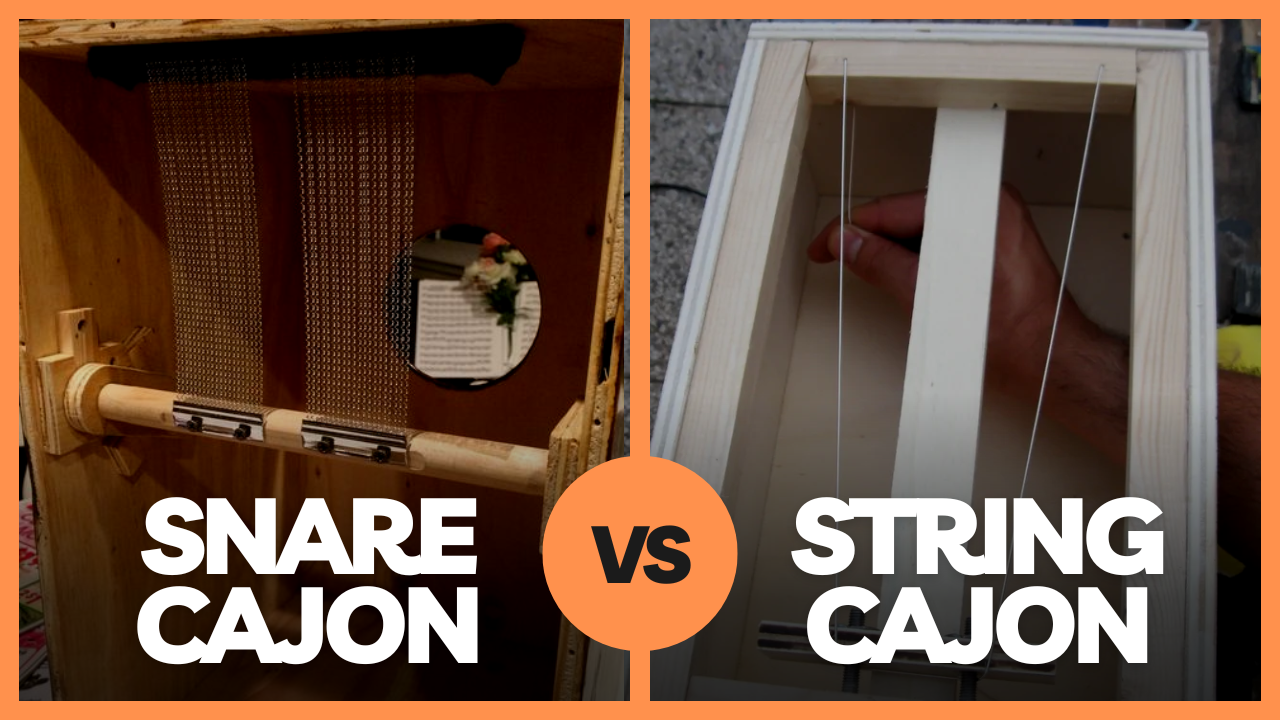Cajon being a replacement for a drum kit ever since it came into being, started fascinating the mass for many reasons. Not just it could sound like drums but was easily accessible and portable as well. But since the time it came under the limelight, it made a special impact on professional drummers for its characteristic developments such as having built with a real snare inside and acting like a sit-on-top box drum. Not only that, but also it allows performing for fewer audiences in a reduced live setting without compromising the playing experience. Also besides its portability and convenience for the experienced ones, it didn’t ever fail to conquer the heart of any novice who is just stepped into the percussion world and yet not ready to keep his hands on a drum set.
So, types of snare in cajon went through several developments to become more than just a box instrument and were transformed into one of the most important percussion instruments in today’s world. One most greater of that development is having a “snare” inside the instrument. Whoever was or were the enthusiasts coming up with such a thought of repurposing an actual snare in a cajon to add a sizzle to the sound was no less than a genius as it brought a revolution to the cajon’s history and players’ experience with it as well.
Now before starting with the snare talk, let’s know about a few features of cajon that are solely associated with the build-ups of a snare. Basically, this box instrument has only three functioning sides out of six, from which the top side is used to be seated, the backside has a sound hole cut on it, and the face or the front part is the only striking side to be played. The face is made out of thin layers of plywood, called “tapa” which has the most important role in the sound texture and in having added snare stretched across its back. Now we know the fundamental construction of a cajon and where the snare is placed inside the instrument. As a percussionist strikes the tapa, the snare adds a buzzing effect to the sound that is produced by the tapa.
So, what a snare is? The literal meaning of snare is a length of wire that is stretched across a drum head to produce a rattling sound. Very prominently, the new-day drummers wanted to develop the cajon in a way that sounds like a drum as near as possible to replace drum kits with this convenient instrument and therefore repurposed drum snare into it. Although in cajon’s scenario, it’s not just a drum snare, it can also be guitar strings to make the buzzing sound. So there are 2 types of a snare. The least famous type of cajon is the one without a snare which is the Peruvian cajon. Usually for not being able to produce a rich sound that has a big range, these type of cajons tends to sound better when played together.
Guitar Strings as Snare
Since the time Paco de Lucia, one of the most famous flamenco guitarists ever took a cajon with him back to Spain, the instrument began its own whole new journey to the modern world. Having quite a similar sound to the staccato of flamenco music, cajon caught his eye with its wide possibility to become an integral part of flamenco music. Guitar strings were added vertically to the back of the tapa to produce a sizzle to the sound. The kind of sound it helps to produce is tighter and more precise than a Peruvian one. This type of snare gives room for more controlled and rapid playing. Tighter strings produce less buzz. Some cajon makers these days use beaded wires or bells attached to the wires. The string settings can be done in many ways. One of these is straight strings with or without bells. But the most relevant way is a diagonal setting of the strings across the top corners, as the players pointed out an issue that the snare would vibrate no matter where they strike the tapa. So strings that are stretched across the corners diagonally made them vibrate only when the top corners are played, leaving the bass totally buzz free and keeping the sound clean and deep.
Drum Snare
The snare cajons are named after the usage of a real drum snare inside the cajon. So the snare consists of the same tightly curled snare wires that are found on a snare drum. Each manufacturer has his own choice of a number of snares, depending upon the model as well but usually, two sets of the snare are found most commonly. Each snare is made of many little wires. The more the wires are in number, more the sizzle it adds to the sound. The snare wires can be arranged and positioned in many possible ways. Usually, the fixed snares are attached to the bracing or the “frame” of the cajon. These are the simplest to be made but cannot be adjusted or muted. The bar-mounted snare system spans from side to side inside a cajon, usually in the upper half. The stationary bar can be fixed or removable depending upon the manufacturer. The angle of the snare wire and distance from the tapa is determined carefully by the builder to maximize the snare sound. If the bar is removable, then the player must get off the cajon to reach inside to take it out. A great feature of an adjustable bar cajon is the control over the snare by adjusting the snare wires. It can simply be switched from a snare-off to a snare-on cajon by muting the snare. The adjustable cajon has a knob or pedal built to one side which allows changing the snare response by simply loosening or tightening the snare wires or string or brushes. This makes the cajon more flexible while having that drum snare slap sound on it. This type of snare doesn’t allow to produce a tighter sound but typically produces a wider sound and is therefore not suitable for highly technical playing, unlike a flamenco cajon. Despite this, cajons having drum snares are great for emulating a drum kit for the above-discussed reasons.
Even though these two types of snares are found the most, cajon builder these days are constantly trying out new things to push the boundaries to the edge and widen the possibilities of specializing snares in their own ways.



